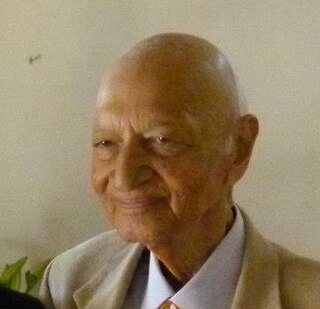Related Research Articles
The Birdwatchers' Field Club of Bangalore is a birdwatching club in Bangalore founded in the 1970s.

Birdwatching, or birding, is the observing of birds, either as a recreational activity or as a form of citizen science. A birdwatcher may observe by using their naked eye, by using a visual enhancement device like binoculars or a telescope, by listening for bird sounds, or by watching public webcams.

Horace Gundry Alexander was an English Quaker teacher, writer, pacifist and ornithologist. He was the youngest of four sons of Joseph Gundry Alexander (1848–1918), two other sons being the ornithologists Wilfred Backhouse Alexander and Christopher James Alexander (1887–1917). He was a friend of Mahatma Gandhi.

The British Trust for Ornithology (BTO) is an organisation founded in 1932 for the study of birds in the British Isles. The Duke of Cambridge has been patron since October 2020.

The American Birding Association (ABA) is a nonprofit organization, founded in 1969, dedicated to recreational birding in Canada and the United States. It has been called "the standard-bearer for serious birding in North America." Originally concentrated on finding, listing, and identifying rare birds, the ABA now seeks to serve all birders with a wide range of services and publications.
BirdWatch Ireland (BWI) is a voluntary conservation organisation devoted to the conservation and protection of wild birds and their habitats in Ireland. It was formerly known as the Irish Wildbird Conservancy (IWC). Irish Wildbird Conservancy was founded in 1968, among others by Major Robert (Robin) Ruttledge, an Irish ornithologist who became its first president.

The ashy prinia or ashy wren-warbler is a small warbler in the family Cisticolidae. This prinia is a resident breeder in the Indian Subcontinent, ranging across most of India, Nepal, Bangladesh, eastern Pakistan, Bhutan, Sri Lanka and western Myanmar. It is a common bird in urban gardens and farmland in many parts of India and its small size, distinctive colours and upright tail make it easy to identify. The northern populations have a rufous rump and back and have a distinct breeding and non-breeding plumage while other populations lack such variation.

Sálim Moizuddin Abdul Ali was an Indian ornithologist and naturalist. Sometimes referred to as the "Birdman of India", Salim Ali was the first Indian to conduct systematic bird surveys across India and wrote several bird books that popularized ornithology in India. He became a key figure behind the Bombay Natural History Society after 1947 and used his personal influence to garner government support for the organisation, create the Bharatpur bird sanctuary and prevent the destruction of what is now the Silent Valley National Park.

Birds & Blooms is an American magazine about backyard plants, birds, butterflies, and other creatures.

The white-cheeked barbet or small green barbet is a species of Asian barbet found in southern India. It is very similar to the more widespread brown-headed barbet, but this species has a distinctive supercilium and a broad white cheek stripe below the eye and is found in the forest areas of the Western Ghats, parts of the Eastern Ghats and adjoining hills. The brown-headed barbet has an orange eye-ring but the calls are very similar and the two species occur together in some of the drier forests to the east of the Western Ghats. Like all other Asian barbets, they are mainly frugivorous, and use their bills to excavate nest cavities in trees.

David Allen Sibley is an American ornithologist. He is the author and illustrator of The Sibley Guide to Birds, which rivals Roger Tory Peterson's as the most comprehensive guides for North American ornithological field identification.

The yellow-throated sparrow or chestnut-shouldered petronia is a species of sparrow found in southern Asia.
Stanley Cramp was a British civil servant and ornithologist best known as the first Chief Editor of the encyclopaedic nine-volume handbook The Birds of the Western Palearctic (BWP).
Devon Birds, known as the Devon Bird Watching & Preservation Society from its founding in 1928 until it as renamed in 2005, is one of the UK's regional ornithological societies.

Zafar Rashid Futehally was an Indian naturalist and conservationist best known for his work as the secretary of the Bombay Natural History Society and for the Newsletter for Birdwatchers a periodical that helped birdwatchers around India to communicate their observations. Awarded Padma Shri by the Government of India in the year 1971, Zafar Futehally was also honoured with Dutch order of merit the Order of the Golden Ark in 1981 and Karnataka Rajyotsava award by the Government of Karnataka in 1983.
The South Australian Ornithologist is the scientific journal of the South Australian Ornithological Association. The journal was first published in 1914 and is usually issued twice a year to members of the association.
Najafgarh Lake, Najafgarh Marsh or Najafgarh Jheel, fed by Sahibi River, used to be a vast lake in the south west of Delhi in India near the town of Najafgarh from which it takes its name. It was connected to the river Yamuna by a natural shallow nullah or drain called the Najafgarh nullah. However, after the 1960s the Flood Control Department of Delhi kept widening the Najafgarh drain in the pretext of saving Delhi from floods and eventually quickly drained the once huge and ecologically rich Najafgarh lake completely. Rainwater accumulating in the Najafgarh lake or jheel basin had been recorded to have occupied more than 300 square kilometres (120 sq mi) in many years before its unfortunate draining.
Kenneth Edwin Laurence Ryder Simmons was a respected British ornithologist born in Kenton, Middlesex. He spent his early childhood in China and went to school in London, Wiltshire and Worcestershire. He completed professional training for a Teachers’ Certificate in 1946/7 and then took up a teaching post in Reading. It was at this time that he took up serious birdwatching and joined the British Ornithologists' Union, the Royal Society for the Protection of Birds and, a year later, the British Trust for Ornithology. During a period of National Service from 1948-50 Simmons was posted to the Suez Canal Zone, Egypt where his observations of birds provided material for later published work. From 1947 onwards he published many notes and papers on birds. He became particularly interested in the taxonomic implications of certain simple behaviour patterns and in bird taxonomy generally and was listed in the 1961 Directory of Zoological Taxonomists. He was also a committee member, joint recorder and Chairman of the Reading Ornithological Club.
Himmatsinhji M. K. was a noted ornithologist, politician and scion of the erstwhile Jadeja ruling family of Kutch, who was member of 3rd Lok Sabha from Kutch.
Indian Birds is a bi-monthly ornithology journal/newsletter that was established in 2004. It was formerly published under the heading Newsletter for Ornithologists for one year. It publishes articles on identification, distribution, migration, conservation and taxonomy, apart from reports of significant ornithological sightings and events. Published from Hyderabad, the publication is owned by New Ornis Foundation. In 2006, the Bugun liocichla, a new bird species from Arunachal Pradesh was described by Ramana Athreya in this journal. The description of the bird carried in the journal was made without the collection of a type specimen as they were too few to risk killing one. Though this practice was not unprecedented, with four prior instances, the pure charisma of the bird together with this practice created a controversy in the scientific and conservation community on the costs and benefits of this approach
References
- ↑ Ghorpade, KD (1976). "Serious Birdwatching". Newsletter for Birdwatchers. 16 (8): 1–6.
- ↑ Ghorpade, KD (1973). "The Newsletter: A critique". Newsletter for Birdwatchers. 13 (8): 1–5.
- ↑ Futehally, Z. (2007). "Recoveries from the Newsletter for Birdwatchers (1969)—17" (PDF). Indian Birds. 3 (2): 72–73.
- ↑ "Newsletter for Birdwatchers". Newsletter for Birdwatchers. Retrieved 15 January 2022.